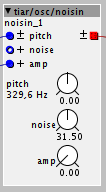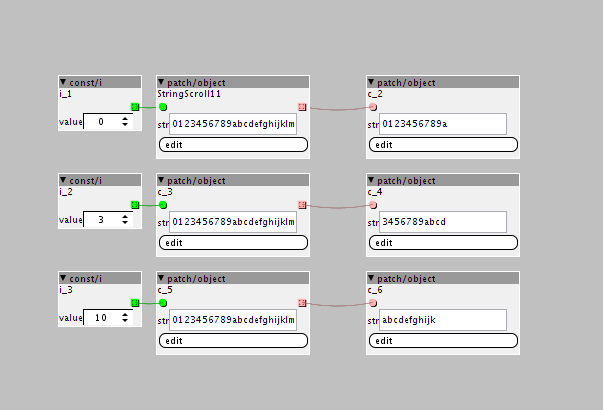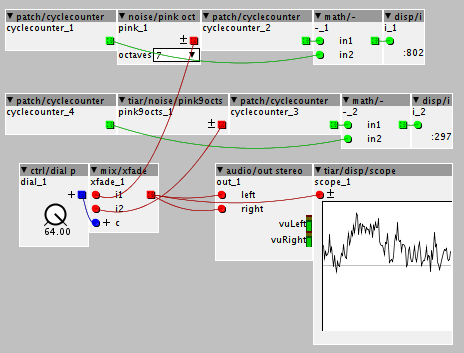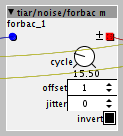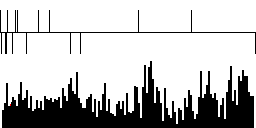Tip about phase modulation
see example menu: Help -> Library -> Community -> tiar ->gain -> DCA_used_for_PM
One issue with phase modulation happens when using fast envelops on the modulator.
That causes glitches because of discontinuities of the phase.
The tiar/gain/DCA objects differs from other VCA and amplifiers. It effectively update its gain when the incoming signal is near zero. This avoids the glitchs while keeping the sharpness of the attack.


